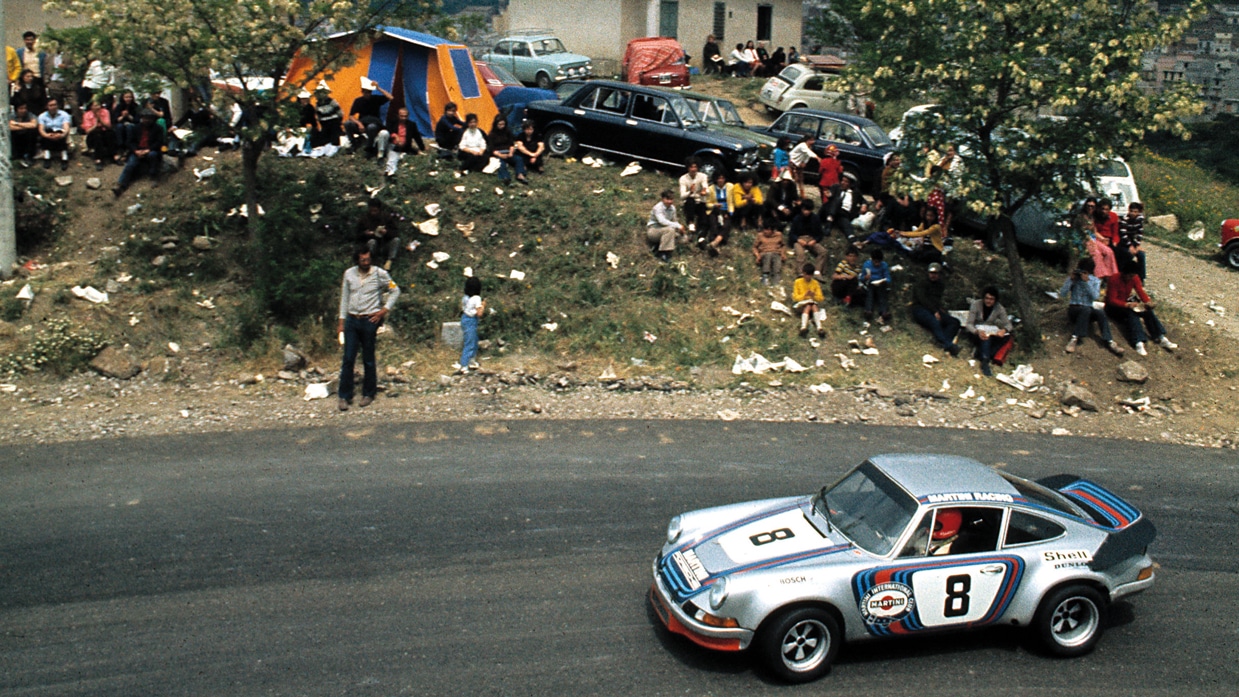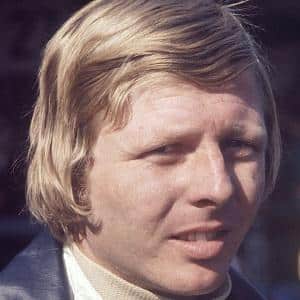Gijs van Lennep: The Motor Sport Interview
He never made the grade in Formula 1 but this flying Dutchman was no slouch in a Porsche. Now in his eighties, Gijs van Lennep recalls his pivotal drives and a life-long desire to go faster, faster, faster
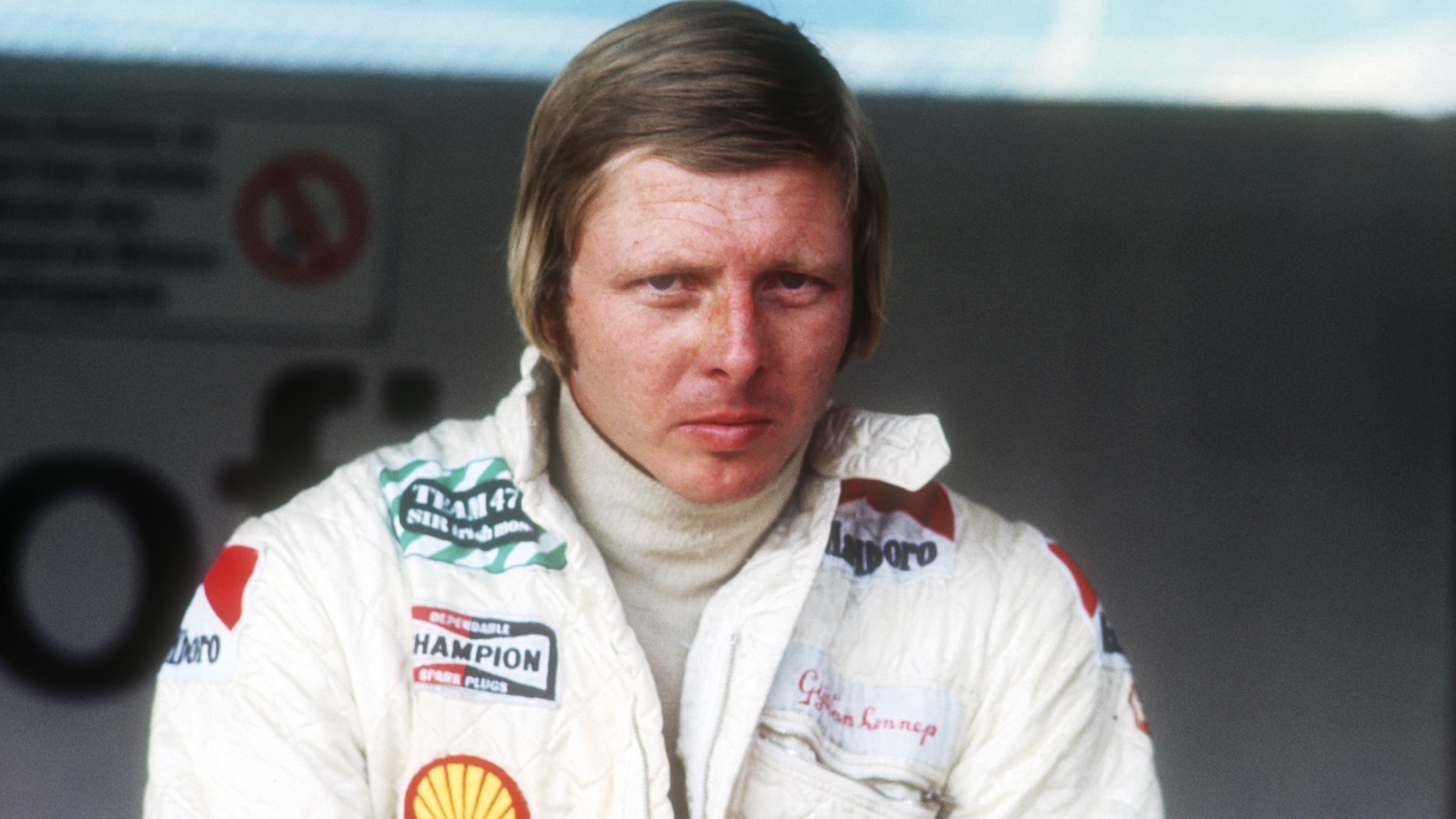
Grand Prix Photo
Formula 1 has gone Dutch. Max Verstappen’s domination with Red Bull plays out before an orange backdrop: hats, smoke, T-shirts. He has also put Zandvoort back on the grand prix map after 36 years in the wilderness. Dutch drivers (even those born in Belgium) haven’t always been so hi-viz.
Much has changed – albeit gradually until very recently – since a speed-happy six-year-old badgered his father into taking him to Zandvoort’s maiden international race in 1948: “I saw Prince Bira win!” Raised a few miles from this seaside circuit, the formative Gijs van Lennep would thereafter often cycle from Aerdenhout to sneak under its fence and watch his racing heroes. There, he would also learn car control at Rob Slotemaker’s famous skid school, make his F1 debut and register his first F1 point.
His, however, would be a spasmodic F1 career – eight starts spread between three teams over five years – counterbalanced by consistent sports car success, mainly with Porsche, and including a brace of Le Mans wins as well as victory in the final true Targa Florio.
An all-rounder from the Vic Elford mould – van Lennep finished sixth in the 1966 Tulip Rally in a 911 co-driven by elder brother David – he was renowned as a safe pair of hands: surefooted in the wet, mechanically sympathetic and formidably quick when circumstances demanded – witness his fastest lap at Le Mans in 1972 in Jo Bonnier’s ill-fated Lola.
That this – plus the 1972 European Formula 5000 title – did not create a fair crack at F1 was the frustration that led him to retire, at 34. Now a fit and chatty 81, he’s gotten over it. Of course, it helped that he went out in style: winning the most important endurance race for the category’s most iconic marque, alongside its greatest exponent.
Motor Sport: Had you made public your F1 retirement before your 1976 Le Mans win?
GVL: Yes. I had finished sixth – Ensign’s first Formula 1 world championship point – in the 1975 German Grand Prix, from 24th on the grid! You’d think that they would have been happy. I rang one of the sponsors – brothers, whose company did security at Schiphol airport – and the first thing he said was, “Van Lennep, you drove a bad race.” I replied, “OK, bye bye!” That was the end of my F1 career: hitting the receiver against a payphone.
I knew now that F1 was no good for me. I’d tried and lost. Not enough money and not good enough driving. I had always wanted to go up the hill and not down the other side. Maybe I could have made a few more quid. But that’s not my thing. So, time to stop. Then Porsche rang: “Le Mans with Jacky Ickx in 1976?” An offer you cannot refuse. I did a race in a Porsche 934 – fifth in the Nürburgring 1000Kms – and that was my preparation for Le Mans a fortnight later.
“Then Porsche rang: ‘Le Mans with Jacky Ickx in 1976?’“
MS: Although sports cars were kinder to you, was becoming Formula 1 world champion your original dream?
GVL: Sure. But maybe my style suited sports cars more. Plus there were not many big F1 sponsors like nowadays. Before Max, it was a minor sport in Holland. And so dangerous: “If van Lennep crashes and dies, it will be bad publicity.” Nobody talks like that now. The only big sponsor then was Marlboro: it helped me with Frank Williams on a race-by-race basis. True, my win at Le Mans in 1971 was huge. I wrote a column for De Telegraaf, the biggest newspaper in Holland, and they did a lot for me: “Ten guilders for van Lennep.” That’s because John Surtees had offered me his second Formula 1 car for 1972 for 400,000-500,000 guilders. We raised some money in this way – but only 15,000. I put that – and for the first time in my career some of my own money – into F5000 instead.
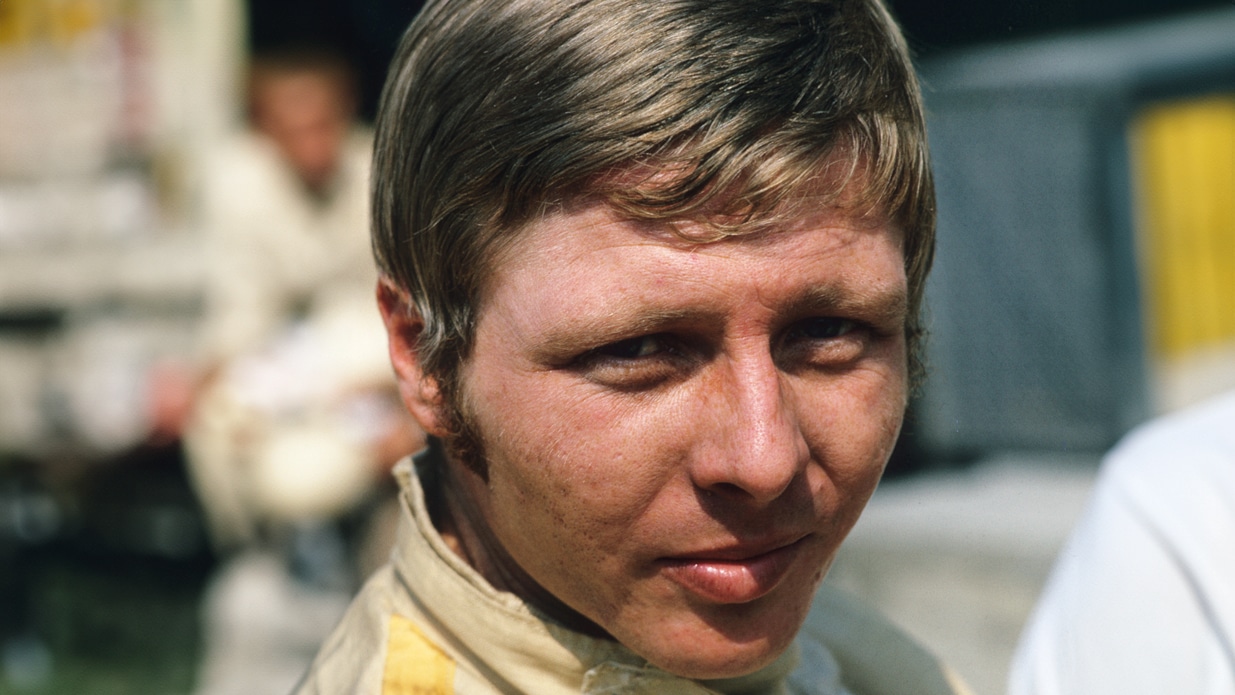
Gijs van Lennep, 28, at Le Mans in 1970 – his first 24 Hours
DPPI
MS: What were your single-seater experiences prior to this?
GVL: I won five times in a Formula Vee Beach in 1965 and twice more in 1966, and for 1967 I had a deal with DAF for Formula 3. But then I had a big accident in practice for the Spa 1000Kms and broke my hand. Two-and-a-half months later, at the Le Mans Bugatti circuit, I finished fifth in only my second F3 race. We were using the Variomatic transmission: fully automatic, no clutch pedal, left-foot braking like rallying, driving always at 10,000rpm – so not so good for the engine. But because of the friction of the big belts at the back – we only had 100bhp in those 1 litres – we were slower than normal-gearbox cars on the straights. I took one first place at Skarpnäck in Sweden. Ronnie Peterson was there; he was third. I liked that.
We continued into 1968 and one of our best races was at Monaco in Brabham BT21s. It was raining for our heat and we finished 1-2 – my team-mate Mike Beckwith was a bit quicker than I was – but the other heat was dry and they put me 16th on the grid for the final. Ridiculous! I should have started from the second row. I finished eighth.
Our new Tecno chassis arrived in August. At Zolder, I finished second, ahead of Mike, in the first two heats – but we crashed at the last hairpin in the third. He came into me, I must say. But never mind. I tried to finish – I was still second or third – but hit the fence at the chicane because a steering arm was broken. After that, Mr van Doorne of DAF said, “We’re not going on with it.”
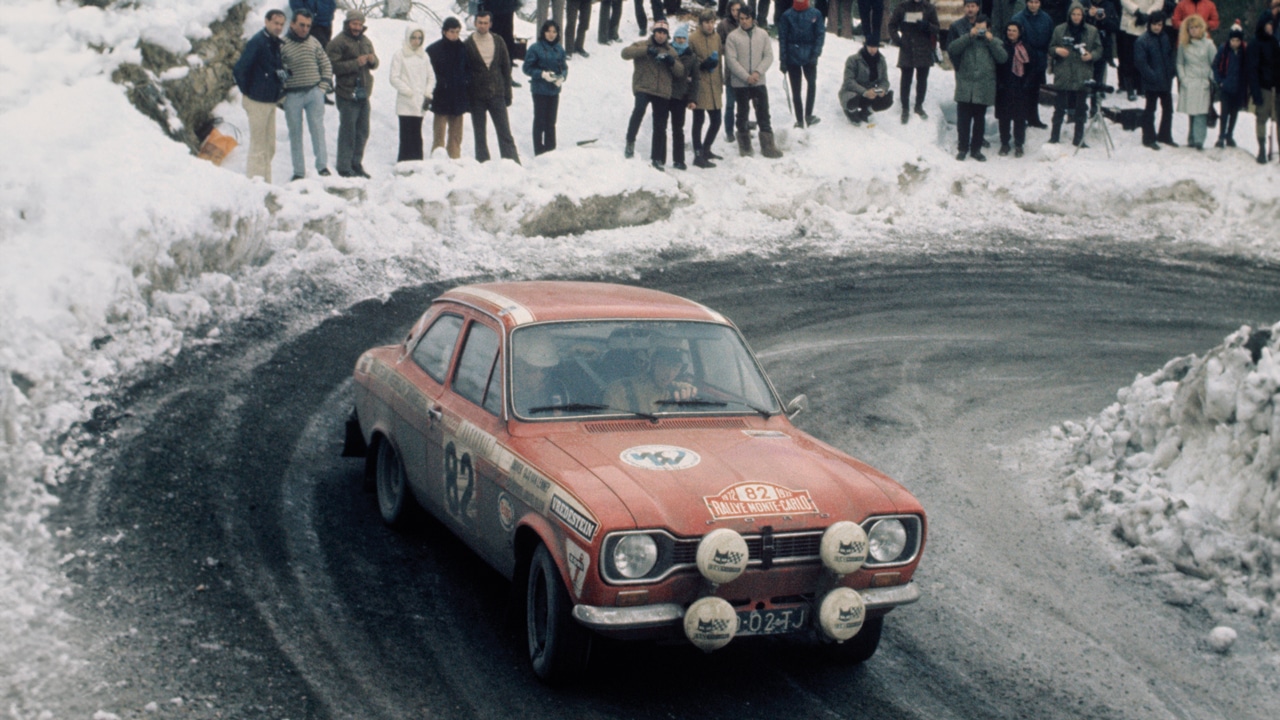
Out for a spin: van Lennep in an Escort Mexico at the 1972 Monte Carlo Rally
McKlein
MS: Did you contest any Formula 2 races?
GVL: One: Zandvoort, 1968. Winkelmann Racing – a very good team. In Jochen Rindt’s Brabham: he was winning everything with it. I finished eighth. My worst race, I must say.
MS: You were by then beginning to make your name in sports cars…
GVL: Yes, but that was nearly the end of my career, too. I got a factory contract with Porsche for Daytona and Sebring in 1967. Then nothing. Porsche didn’t invite me to other things. Until July: I finished third with Vic Elford in a works 911 R at the old Mugello, a road circuit more difficult than the Targa Florio. So it was Ben Pon who pushed me – sometimes as co-driver, others as team manager – in everything. Meeting him in 1962 when I was 20 was a big change. The Dutch importer for VW, Audi and Porsche, he created Racing Team Holland and gave me a drive at Zandvoort in his 904 GTS at the end of 1965: I won. We would remain friends for more than 60 years.

Advice at Brands Hatch for the 1972 Race of Champions.
McKlein
MS: What had you done before meeting him?
GVL: I had always wanted to be quicker, quicker, quicker – even when slaloming my kart between chairs on the terrace of my parents’ house at just four years old. When I was 13, 14, 15, I had mopeds, which I made go faster with help from older friends. We raced them through the village – until a policeman came and switched them off! Go-karts were not yet coming from the USA, so I made my own with the local bicycle man, who had a good workshop: a three-wheeler with 38cc – just a plank with one small wheel at the rear and then a four-wheeler with 100cc. There was a park next to the house and I was sliding over cinders and gravel there. I broke my leg on the go-kart – I wasn’t looking and a doctor on a scooter ran over me – and also my hip when I hit a gate on a moped. More than 250 races as a professional racing driver and barely a scratch! My mother had a Fiat 600, and in 1961 I put it on its roof at the last pylon of a slalom. My father was watching from the grandstand; he was OK with it. My mother wasn’t. She never understood.

Success in Formula Vee –here in the 1966 Austrian GP – led to a drive with DAF in F3
McKlein
MS: When did you step up from the national racing scene?
GVL: I had shared a BMW 1800 TISA in the 1965 Spa 24 Hours with Hans Koster; we retired. Things started to get really serious in 1966. Ben had bought a Carrera 6. At the Nürburgring 1000Kms, with David co-driving, we finished seventh overall – first in class. That was because it had started raining in the last two laps. We had been running third before that. My brother was not as quick as I was, so Ben let him drive just one stint while I did five hours. Something ridiculous. It worked.
I drove fast in the rain because I was not scared. Skid school! We would go around Zandvoort on full opposite lock, driving a 911 on the throttle. For the whole track. It was nothing to do with driving fast. It was all about car control. No more steering lock remaining before you go right around? Do the clutch! But then the car comes back so quickly that you must be ready. We did that for hours. Never spun. Also, black ice on the boulevards – very wide back then – of Zandvoort, in a Beetle on normal tyres: a 360 at 40kph. Left. Right. Handbrake. Three 360s at 90kph. Then the police arrived in their Opel Kadett: “What’s going on?” They spun three times. And I drove home. They are still looking for me!
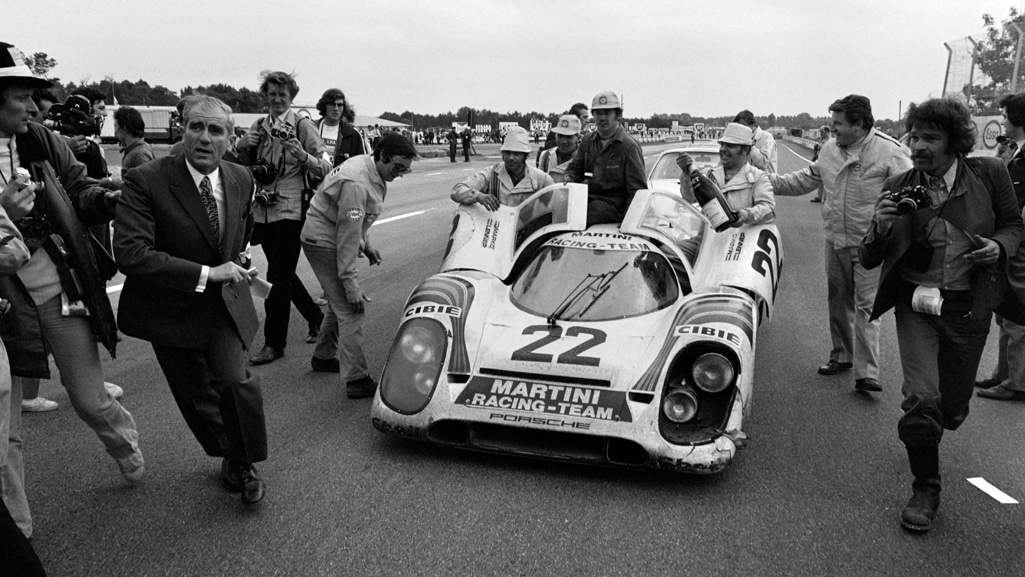
Driving alongside Helmut Marko in a Martini Porsche, van Lennep won the 1971 Le Mans 24 Hours, setting a distance record that would last until 2010
Getty Images
MS: Why did Racing Team Holland join forces with Racing Team AAW of Finland in 1970?
GVL: We were running out of money. Again. I had spent most of 1969 racing a 911. My friend Toine Hezemans and I won the Nürburgring Six Hours of the European Touring Car Championship. Ben told me that we needed a 3-litre Porsche sports-prototype to get going again in 1970. I went to see his big brother and boss Mijndert at his office to tell him that he had to buy a car for me: 110,000 Deutschmarks. “OK. But I am not coming to your funeral.” A 908/2: one of the best Porsches. Toine and I finished fourth at Montlhéry in 1969. We would have done better but for a flat tyre. Our car was still prepared in Holland in 1970, and we used Dutch Koni shock absorbers; the factory always had Bilsteins. At the Nürburgring, we were five seconds quicker than the next best 908/2 in practice. But sadly that was the end of my co-driver Hans Laine.
MS: What caused Laine’s accident?
GVL: The car had two spoilers at the front – one left, one right – and he had knocked one off. It was my turn to scrub tyres for the race. There was a mistral blowing down the long straight and the car went to the right over the first hump. I lifted my foot off the throttle because I was not in a hurry. But when Dunlop measured the pressures: 40lb instead of 22. Shit! Laine said we would have to do it again. He came onto the straight and didn’t lift. The car went up, then down. Burst into flames. Such a stupid accident, you can’t believe it. He was fantastic. Always a few tenths quicker than I was. Perfect for long-distance racing.
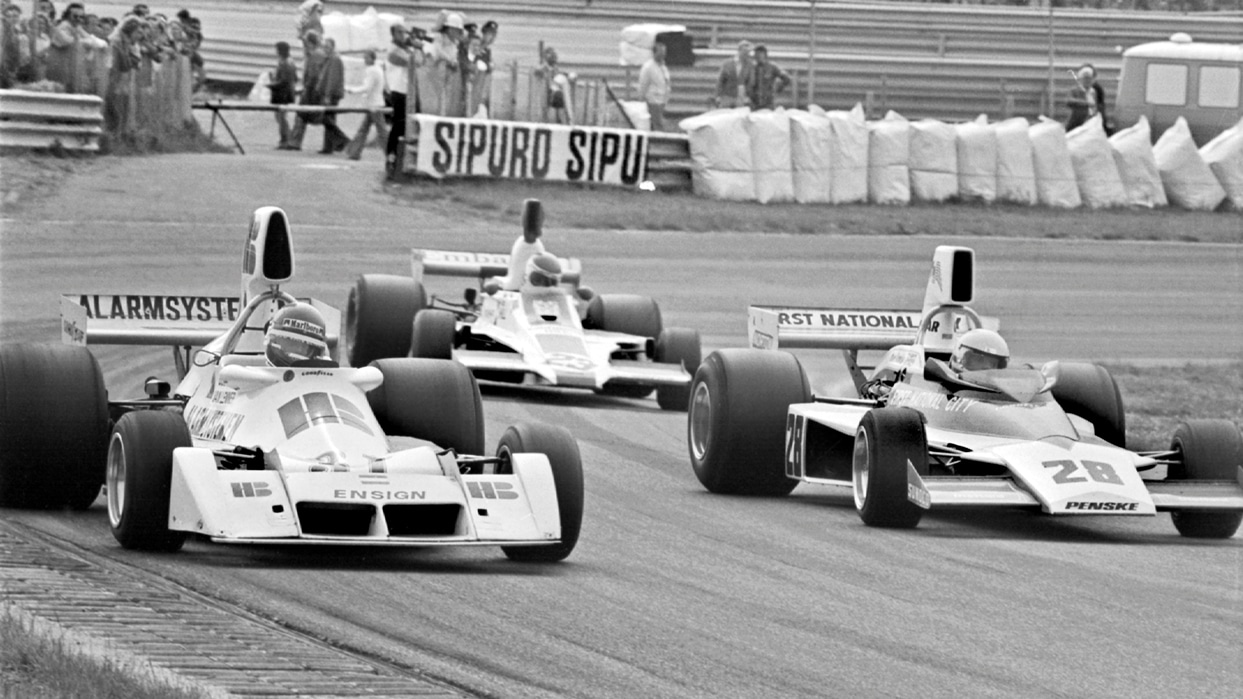
Van Lennep, nearest, in an Ensign at the 1975 Dutch GP
Grand Prix Photo
MS: You drove AAW’s 917, too, and 917s for Martini Racing and John Wyer’s Gulf squad…
GVL: That was a big rivalry – but the works team was Martini Racing. Hans-Dieter Dechent was its team manager but had nothing to say. It was the big bosses from the factory who did the job. The cars were the same, though. I drove 23 races in 917s and scored its last win: the 1971 Paris 1000Kms, with Derek Bell. It was like a go-kart. You could steer it on the throttle. Beautifully actually. OK, I didn’t drive it in 1969 when its airflow was not so good. Still we knew it was a dangerous car because your feet were ahead of the axle. You thought about it. Sure. At Spa, we averaged 245kph; flat-out left-right between the houses; one straw bale against the houses. I loved it. I was young. Lots of car control. And I always say that we didn’t know any better.
But, of course, it was crazy. You had to brake hard in a 917, exert a lot of pressure, and the steering was quite heavy. So it was very tiring on small circuits: 40 laps of the Norisring and you were knackered. At Watkins Glen in 1971, I finished second with Jo Siffert. The next day I did 78 laps in the Can-Am race there. Undriveable on the wrong tyres – they were too small – I finished ninth and could not get out of the car for half an hour afterwards.
Luckily, Le Mans had long straights. The bump before the Mulsanne kink meant that you knew when to steer right even if you were asleep!
MS: Your winning car of 1971 held a secret. Were you in on it?
GVL: No. We just knew that it handled and accelerated well. Certain things I only discovered a few years ago. In 1970, I had shared AAW’s 917 – a 4.5-litre – with David Piper. We were ahead of the eventual winners when he spun in the rain at night. They rebuilt the right-front corner, but now it was steering left. Changing into fifth on the straight, a tyre blew because of the stress. The suspension came off. The wing came off. Race over. But it had gone well to begin with, so Porsche asked me back for 1971. And I won it with Helmut Marko in a 5-litre short-tail with special magnesium frame. Perhaps they hadn’t expected us to finish. Certainly the long-tails were 20kph faster.
“Forty laps of the Norisring in a 917 and you were knackered“
MS: What did you discover eventually?
GVL: Our chassis was the third. The first broke after a couple of hours’ testing at Weissach. It was difficult welding at the joints, so they put sleeves over and welded on them. They drove the second chassis for, I think, 10 or 12 hours. The frame only weighed 40kg, about half that of a normal aluminium one, so we were below the minimum limit. Because of this they fitted a 40-litre oil tank right in the centre of the car. Very clever. There was something else special about that car: its brake discs were drilled for cooling and with about five or six hours to go, from every little hole emerged a tiny crack. To change them would have cost us the win. So Helmut and I agreed to hardly brake any more. Yes, we would be slower, but it was the correct thing to do. I finished the race, took the ignition key out and that was that. The car went straight to the museum. You can’t drive it now. It’s too thin, too light. But we had set a distance record that lasted 39 years.

Another win in a Porsche – this time the Paris 1000Kms sharing driving duties with Derek Bell
Mcklein
MS: You made your F1 debut the following week. A difficult transition?
GVL: I was a little ill and tired, to be honest: “Seventy laps of Zandvoort? I hope it’s raining.” It rained, and I was on the right tyres: Firestone. No mistakes, I finished eighth in an old Surtees TS7. Behind me were three world champions – Graham Hill, Jackie Stewart and Denny Hulme. They were on the wrong tyres. But that’s not mentioned in the results.
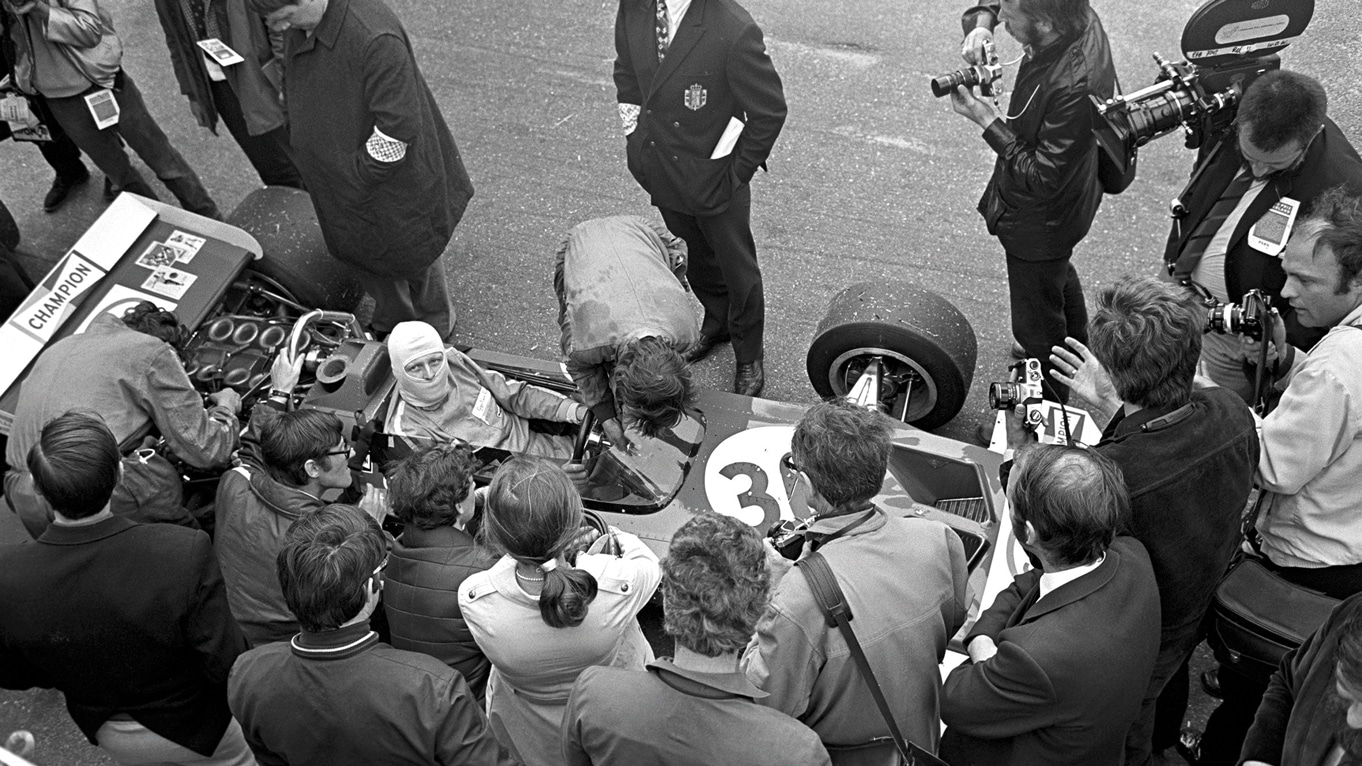
A first taste of Formula 1 came at the 1971 Dutch Grand Prix; his next F1 drive would be in ’73
McKlein
MS: You continued your association with John Surtees into 1972…
GVL: He was a great guy, always helpful. But Jackie Epstein’s Speed International was a low-budget team and we couldn’t make our F5000 TS11 better, better, better. I finished in the points at almost every race and had to be fourth at the Brands Hatch finale to get the championship. But my car was getting slower, slower, slower compared to the others. Alan Rollinson’s Lola was behind me in fifth place for 50 laps of the short circuit. A gentleman, he tried a few times but could never get past me. His Lola was the better car. But my Lola in 1973 wasn’t. Everything either broke or fell off. Tenth overall. Not good. But F1 was still the idea.
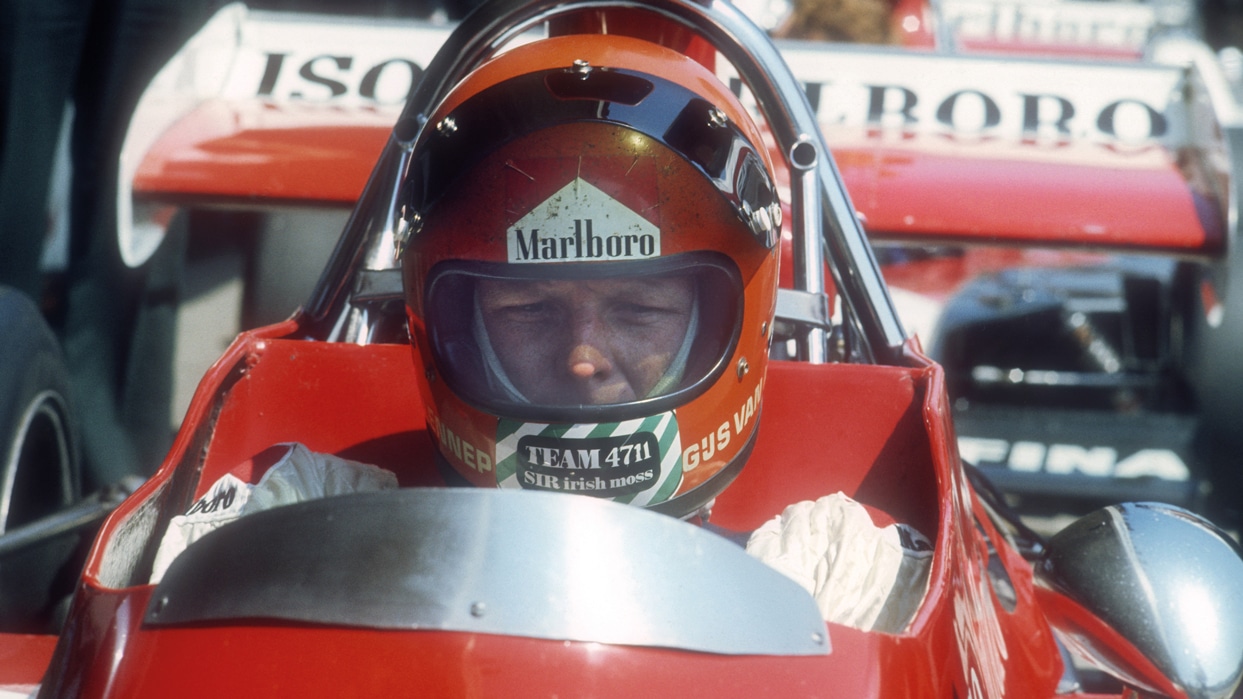
Failing to make the grid for Frank Williams at the 1974 Dutch Grand Prix
Klemantaski
MS: What was it like driving for Williams?
GVL: Ach, he wasn’t my friend. I finished sixth at Zandvoort in 1973 – the race with the big accident for Roger Williamson – ninth in Austria, and the engine broke in Monza. Marlboro paid in 1974, too: at Nivelles in Belgium and again at Zandvoort. I came into the pits five minutes before the end of qualifying for the Dutch GP and got given the rear tyres of Arturo Merzario. I didn’t know. I came in again for the last two minutes to put the wing down to be faster on the straight. They put the wing the wrong way. I missed out. Not nice at your home race. But if I didn’t qualify then Frank’s engine wouldn’t have to do 300km for nothing. I thought that about 40 years later: they put the Marlboro money in their pocket and not in the car of Gijs. I understand. That’s how it goes. F1 is very big business.
MS: How did this compare to Ensign in 1975?
GVL: The team was great. Its car was no good. I was 10th at Zandvoort in its N174. Then they let me drive its new N175 at Paul Ricard. It was quick on light tanks. After Emerson Fittipaldi lapped me I drove behind his McLaren for the rest of the race. Easy. But full of fuel, it was difficult to handle. That was the car I drove in my last GP. My F1 career went down the drain even though I had finished sixth twice, eighth, ninth and 10th.
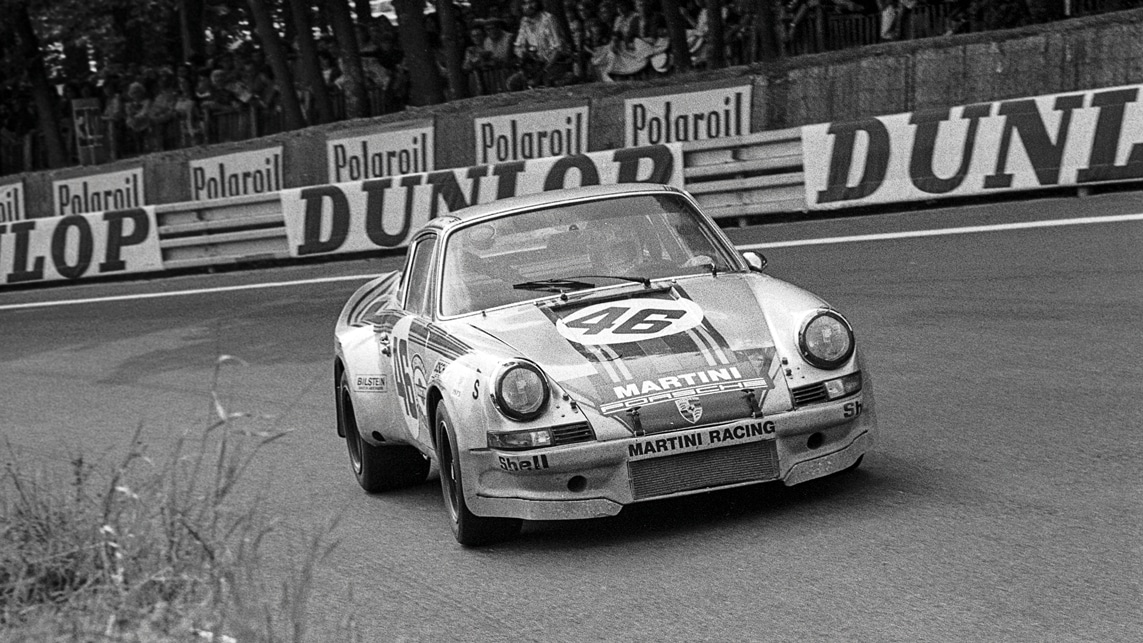
Fourth overall at Le Mans 1973 in a 911 Carrera RSR.
Getty Images
MS: Although you raced Abarth, Alfa and Mirage sports cars, you will be remembered for your successes with Porsche at Le Mans.
GVL: True. But in my heart the Targa is bigger because it is a road race. I finished second in 1971 for Alfa Romeo – Toine had put me forward – and I was supposed to have won it for them in ’72: Carlo Chiti of Autodelta paired me with Vic Elford and made us a special engine. It blew up on the first lap. Anyway, after winning the Targa in 1973 with Herbie Müller in a works Carerra RSR, we drove at Le Mans with basically the same car. Dr Ernst Fuhrmann, the big boss, said: “Gentlemen, as fast as possible, please.” There was no radio communication. Just an arrow at the pits: up or down.
In the night they showed that they wanted me to drive a second faster. I didn’t know where I was going to find it while being nice to the gearbox. Porsche’s synchromesh means you must pause in the middle. Double-declutching. I’ve never been so tired in my life. Pushing. To see if a road car – though we were running in the Prototype class – could last like that. We finished fourth overall.
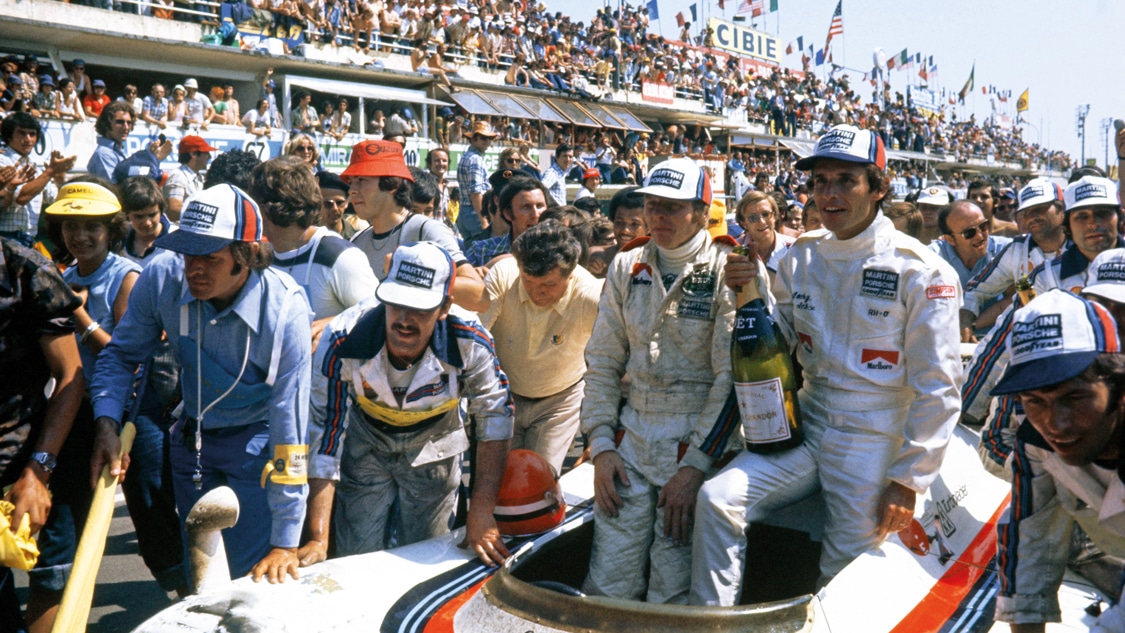
A second and final Le Mans win – 1976 in a Porsche 936 with Jacky Ickx
Getty Images
MS: And you were second the following year in an RSR Turbo…
GVL: A great car: same as RSR, but with bigger wheels. And that engine went really well. But if you drove behind it – my God! Everything glowing red-hot, you wonder how it stays together. But it did. Porsche-like. The first turbo to finish a 24 Hours: that was something special. We broke the gearbox five or six hours before the end. The Matra in front of us also broke its gearbox – a Porsche gearbox! – but they could change it because it was sitting out the back; ours was ahead of the engine. So we only had fourth gear. Everybody is passing you. The noise from the engine is unbelievable. The gearbox bearings are rattling. Mamma mia! Matra took three-quarters of an hour to change its gearbox. Without our problem, we could have won the whole thing.
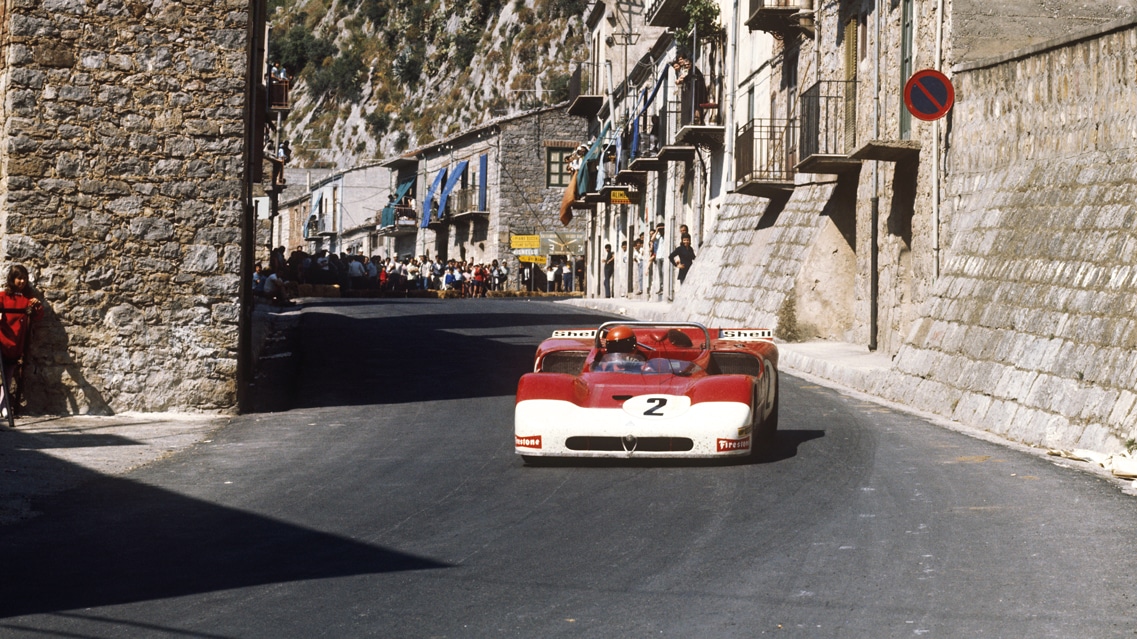
For van Lennep, racing didn’t get much better than the Targa Florio. He finished second in 1971 in an Alfa Romeo T33/3 and won the last true outing of the race, 1973, in a Martini 911 RSR, left
Alamy
MS: Was it a relief when you drove a genuine prototype in 1976?
GVL: The 936, with the same engine as RSR Turbo, was so much quicker. Easier. We were going through the Porsche Curves at high revs in third gear during practice. Jacky said we should put fourth gear down. I agreed. Now we were going through at 6200rpm. This meant there was a bigger gap between fourth and fifth, but that was no problem. The other 936 was not changed. In the night I was behind Reinhold Joest and I heard his engine screaming, up and down. It broke. There was not much competition and we were a long way in front. But always something happens at Le Mans. The mechanics, burning their hands through their gloves, had to change the turbo, exhausts, the lot. After that we had less turbo pressure. But still we won by 11 laps. Driving always fast. But taking no risks.
MS: Was it a relief also to retire?
GVL: I say no risks… In that last race I had to drive through burning petrol. Double yellows. I was the first to arrive; 500 yards behind the crash, again I was lucky. I can still see the man burning in his Datsun, sat at its steering wheel. But then the green flag goes out and my boss wants me to drive as quickly as possible. So down goes the foot. Racing is hard. Plenty of accidents. Lots of them stupid. That’s how it is still. I am happy for Max. But I am very happy with my career – that this is what I could do.
